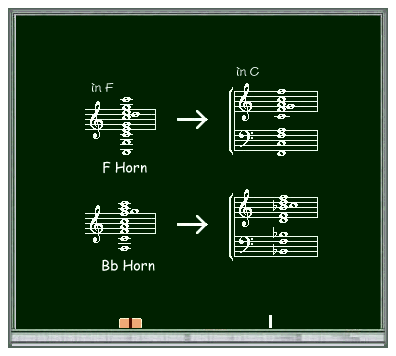Even with the French horn, many schools do not try to expand the range, but only practice the notes that appear in the pieces. Even in junior high school, many students have never played the low range that is not often used in wind bands, but by practicing the low range, the tone will become thicker and more horn-like.
It is not necessary to make elementary school students practice the highest and lowest ranges, but I think it is necessary to teach them the entire range at the beginning. It is a good idea to show them the notes that are made when none of the valves are pressed (open), written on sheet music.

The top is the sound made by an F horn, and the bottom is the sound made by an open Bb horn. The left is the note on the horn sheet music (in F), and the right is the actual note (in C). Some notes are not often used in songs due to pitch issues.
The Bb horn has the same length as the trombone or euphonium, so the actual sound it produces is the same, and it can also produce an F (called a pedal note) one octave lower than the low F (actual note is Bb) described here.
There are some schools that have double horns, but only use either the F or Bb side(the thumb valve is not even oiled).
Even if it is impossible to learn all Fingerings and use them according to the phrase, but why do not teach students to use the F side for notes below the G
 on the second line or the C
on the second line or the C  in the third space above that, and the Bb side for notes above that, depending on the range?
in the third space above that, and the Bb side for notes above that, depending on the range?